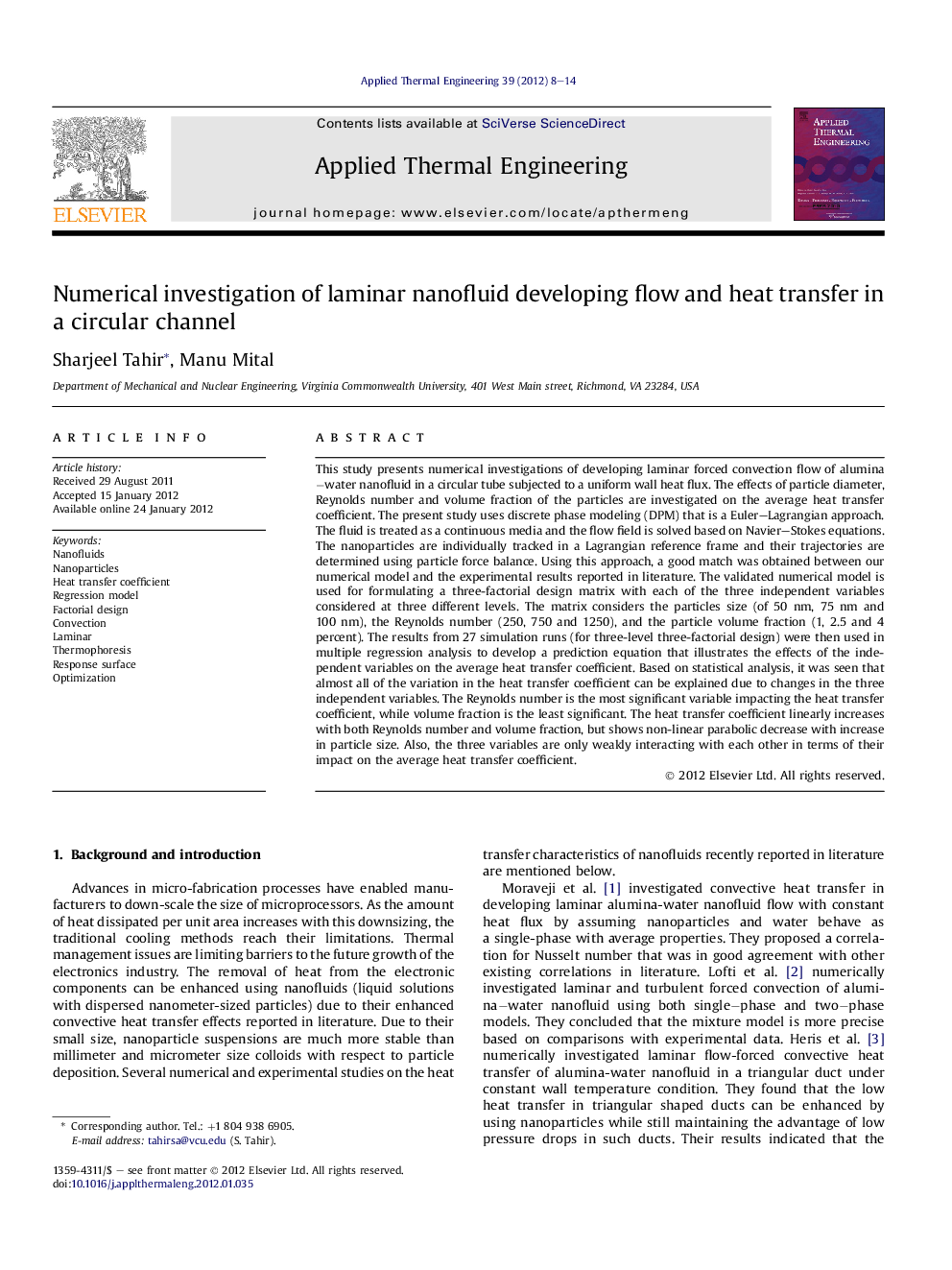| کد مقاله | کد نشریه | سال انتشار | مقاله انگلیسی | نسخه تمام متن |
|---|---|---|---|---|
| 647509 | 1457179 | 2012 | 7 صفحه PDF | دانلود رایگان |

This study presents numerical investigations of developing laminar forced convection flow of alumina−water nanofluid in a circular tube subjected to a uniform wall heat flux. The effects of particle diameter, Reynolds number and volume fraction of the particles are investigated on the average heat transfer coefficient. The present study uses discrete phase modeling (DPM) that is a Euler–Lagrangian approach. The fluid is treated as a continuous media and the flow field is solved based on Navier–Stokes equations. The nanoparticles are individually tracked in a Lagrangian reference frame and their trajectories are determined using particle force balance. Using this approach, a good match was obtained between our numerical model and the experimental results reported in literature. The validated numerical model is used for formulating a three-factorial design matrix with each of the three independent variables considered at three different levels. The matrix considers the particles size (of 50 nm, 75 nm and 100 nm), the Reynolds number (250, 750 and 1250), and the particle volume fraction (1, 2.5 and 4 percent). The results from 27 simulation runs (for three-level three-factorial design) were then used in multiple regression analysis to develop a prediction equation that illustrates the effects of the independent variables on the average heat transfer coefficient. Based on statistical analysis, it was seen that almost all of the variation in the heat transfer coefficient can be explained due to changes in the three independent variables. The Reynolds number is the most significant variable impacting the heat transfer coefficient, while volume fraction is the least significant. The heat transfer coefficient linearly increases with both Reynolds number and volume fraction, but shows non-linear parabolic decrease with increase in particle size. Also, the three variables are only weakly interacting with each other in terms of their impact on the average heat transfer coefficient.
► Validated numerical model used to investigate heat transfer in nanofluid channel.
► Impact of Reynolds number, volume fraction, and particle size investigated.
► The three factors are only weakly interacting in their impact on heat transfer (HT).
► HT linearly increases with Reynolds & volume fraction; Reynolds more significant.
► HT shows parabolic decrease with increase in particle size.
Journal: Applied Thermal Engineering - Volume 39, June 2012, Pages 8–14